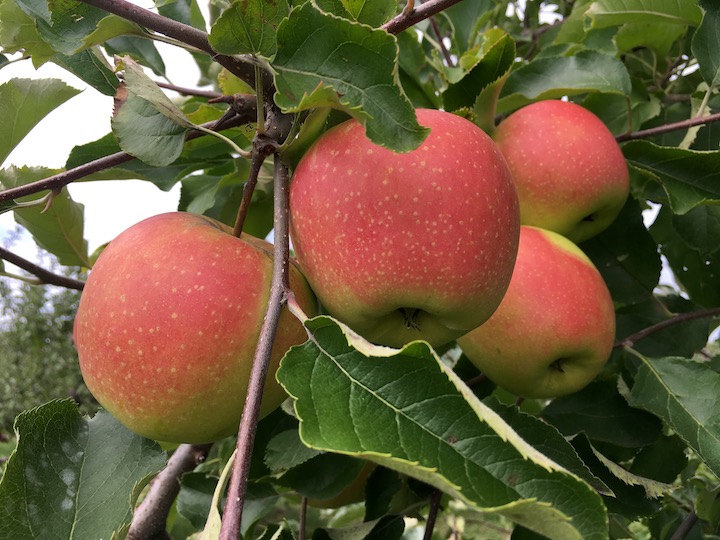
IT IS FITTING that Massachusetts native John Chapman’s birthday falls smack in the middle of the fresh apple harvest.
That’s because Chapman did more to spread the apple gene in America than anyone before him, spending nearly 40 years planting orchards in the Midwest before it was widely settled two centuries ago.
Generations ever since have both remembered and mythologized Chapman by his nickname, Johnny Appleseed.
Among the many myths about him, we know for certain that after spending his earliest years in Leominster, Massachusetts, where he was born, young John grew up in Longmeadow, just miles from the Connecticut River.
Chapman became one of America’s first great walkers and naturalists. A renowned herbalist as well as apple grower, he was consulted by Indians and European settlers alike.
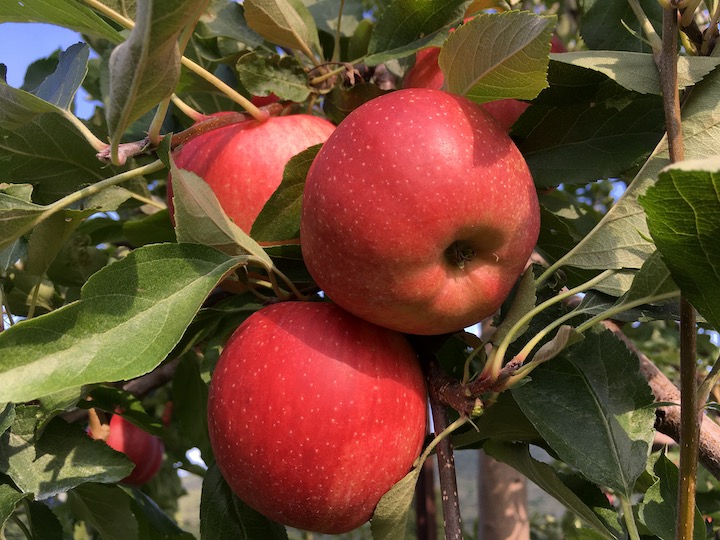
He was generous and devoutly religious, with a deep respect for nature and preference for living in the wilderness.
Chapman was literate but not a writer, so it has been left to others to tell his story, and many have taken liberties with the facts to romanticize, commercialize, moralize, or otherwise promote their interests.
But the legend of Johnny Appleseed is separate from the man. His story needs no embellishment.
So raise a tall glass of cider (or crunch a fresh apple) to celebrate this peaceful, nature-loving man’s 248th birthday this Monday, September 26, and separate a little fact from fiction!
* * *
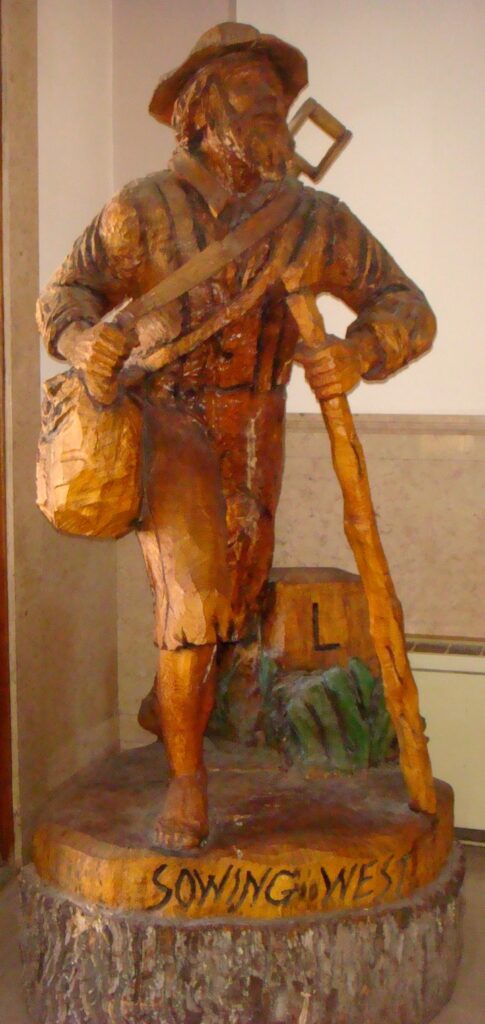
CHAPMAN PLANTED DOZENS of orchards across Ohio and Indiana between 1806 and 1845.
He would choose an area for an orchard where he anticipated westward expansion was heading, usually by a river. The Indians, of course, lived on the land first, so there were trails to guide him, and evidence of prior gatherings.
Chapman would clear by hand about three acres and plant it with apple seeds, fencing the orchard in with the brush he had removed. He would return from time to time to tend the young trees, and when a small community of settlers had formed, Chapman would sell them saplings for a few cents apiece.
Apple trees were in great demand, primarily for making cider, fresh and hard. Everyone drank it, year-round.
Planting apple trees was a requirement of some land grant companies, too, to discourage speculators.
Apples were versatile –– a source of sweetness, they could be dried, cooked, or distilled into vinegar –– and familiar, reminding the European settlers of their old customs and homes.
* * *
JOHN CHAPMAN was born in Leominster, Massachusetts, on September 26, 1774, the second child of Nathaniel and Elizabeth Symonds Chapman. His mother died of tuberculosis when John was two; Nathaniel, a soldier in the Continental Army, was in New York at the time.
Nathaniel eventually married Lucy Cooley and they moved to a modest house in Longmeadow, Massachusetts, Cooley’s hometown, when John was six.
There are no records of his childhood, although many writers and artists have imagined one for him. At age 23, he set out west on foot with his oldest half-brother, Nathaniel.
They stopped when they reached the Allegheny wilderness north of Pittsburgh in western Pennsylvania. John spent the next seven years learning survival skills and preparing for his lifelong work, though few stories remain of these years.
* * *
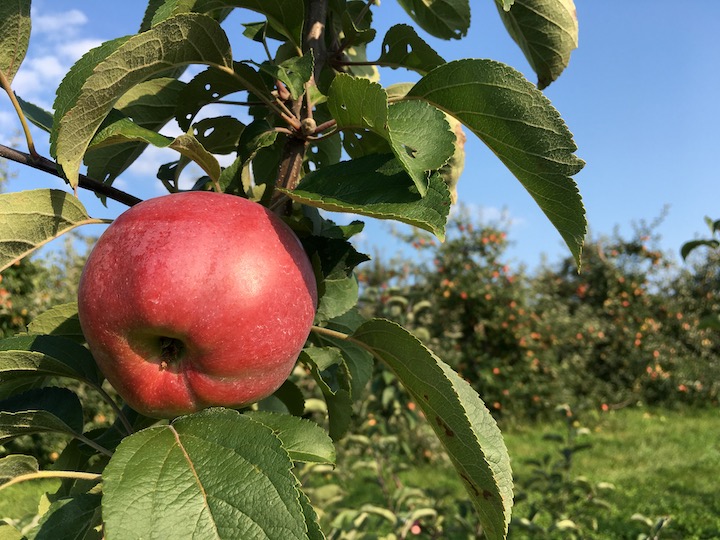
CHAPMAN was an indefatigable walker from the time he set out from western Massachusetts. He crisscrossed Ohio and Indiana numerous times along rudimentary footpaths and roads, carrying apple seeds with him from western Pennsylvania cider mills.
He occasionally rode a horse or paddled a canoe, but usually he walked, over wild terrain.
Chapman lived most of his adult life outdoors, and he preferred sleeping under the stars to even as rudimentary a shelter as a cabin.
* * *
IN VIRTUALLY ALL of the surviving legends about Chapman, apples are a mere prop, a backdrop bestowing legitimacy and wholesomeness to the teller’s own values.
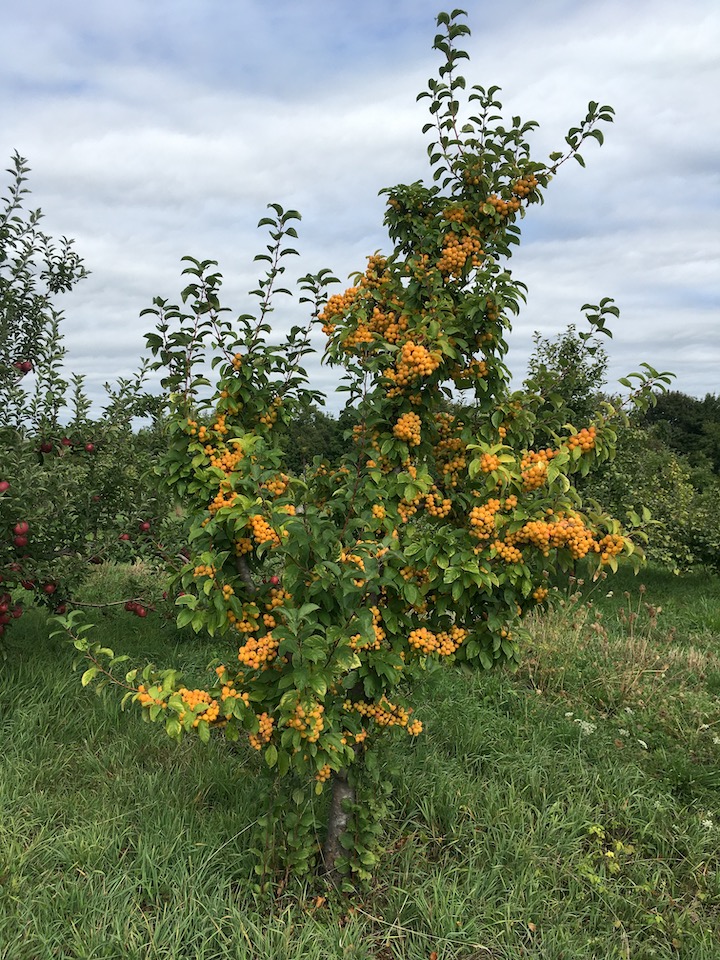
He is portrayed as a holy man, nature lover, herbalist, vegetarian, teetotaler, eccentric, businessman, buffoon, Midwest Paul Revere, and many more things, depending on one’s point of view, beginning in his lifetime and in every generation since.
The belittling caricature of Chapman wearing a tin mushpot on his head has no basis in fact. “Not a single authentic instance of its having been actually seen has been preserved,” wrote Robert Price in his definitive 1954 biography.
Nor are there any records about how John Chapman felt about apples.
Nowhere in the surviving stories do we gain insight into what motivated Chapman to devote his adult life to sowing apple seeds, often in primitive conditions.
His connection to apples is stated as a mere fact, without embellishment or explanation.
All we have left are a nickname, some personal accounts of his behavior, and a few business transactions. We can only infer the depth of his passion for this remarkable fruit from these scant records and his vast plantings.
Whatever his reasons, John Chapman, aka Appleseed, lived a life rich with apples.

* * *
THE WAIT IS OVER! We’ll have homemade apple crisp Saturday and Sunday at the New England booth in the Massachusetts Building at the Eastern States Exposition (“The Big E”).
We’ll also have single-serving apple pies, apple pie squares, and cider donuts.
It’s a chance to sample a number of apples and a number of orchards, including McIntosh from Brookfield Orchards, North Brookfield, Breezeland Orchards, Warren, and Nestrovich Fruit Farm, Granville, Massachusetts.
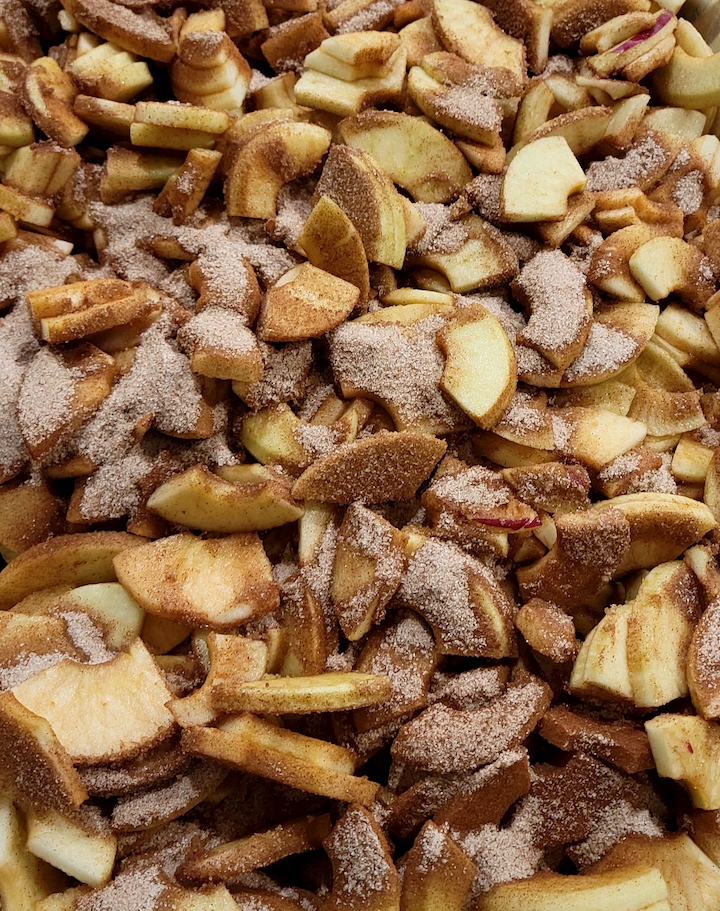
Ginger Gold, Gravenstein, and McIntosh are from Tougas Family Farm, Northborough, Massachusetts. Gala and Honeycrisp from Pine Hill Orchards, Colrain, Massachusetts.
Visitors can enjoy fresh cider from Carlson Orchards, served hot, cold, or in apple pie smoothies.
New England’s largest fair continues through Sunday, October 2. Massachusetts Building hours are 10 a.m. to 9 p.m. daily.
Come see us and talk apples!
2 Comments
Jan Kaiser
A wonderful article, Russell. I could taste the apples with the descriptions and photos. I will raise a toast to Johnny Appleseed tonight with a gin and tonic – with 2 limes!
Russell Powell
Thanks for the feedback–great to hear it, and glad you were able to toast this fascinating man.